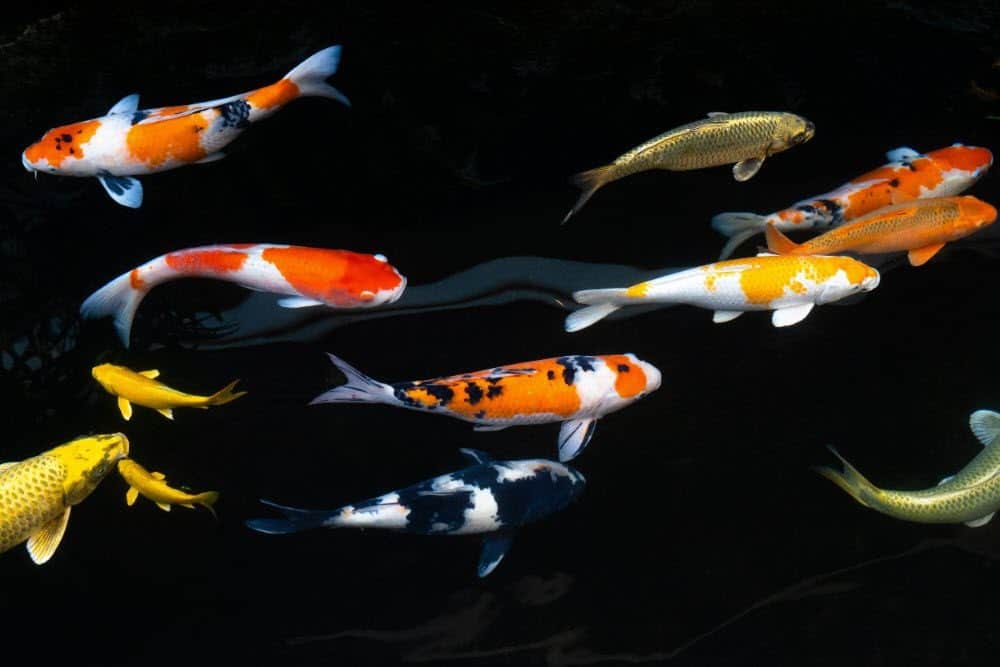Koi fish catch the eyes and hearts of everyone. For centuries the fish have been bringing symbols of strength, perseverance, and good fortune to people worldwide. The beauty and meaning Koi fish embody has carried them across borders, even into our backyards.

As a pond hobbyist and Koi enthusiast, much of my time consists of extensively researching the ins and outs of Koi ponds and the aquatic life that lives in them. Recently, my research has been directing me towards the life and beauty of the Matsuba Koi.
Eager to share my findings with fellow Koi lovers like you, the following article will detail the origin story and general care of the great Matsuba Koi.
To understand how the Matsuba Koi came to be, you first should know the origins of the Koi. Japanese Koi fish date back to the early 19th century.
Koi were originally in the hands of Japanese rice farmers who would sometimes use the Koi as a source of protein when cattle were scarce in the country. Eventually, rice farmers began noticing the various mutations of Koi due to their fascinating color patterns, and thus, the domestication of Koi was born.

Of the dozens of Koi varieties, Matsuba Koi is identifiable by its metallic base and black net pattern. Matsuba Koi are also the only Koi variety that comes with different body colors. The most common Matsuba Koi include:
If you are a fellow Koi-loving pond hobbyist, it’s always a good idea to research the level of care that Koi fish require.
Matsuba Koi grow up to three inches long. To keep the Matsuba in good health, water temperatures should fall between 36 and 90 degrees Fahrenheit with a pH level ranging from 6.8 to 7.2. Your koi pond should always be at least 1000 gallons and three inches deep.

Adding aquatic plants to your pond can provide you with an aesthetic appeal while providing privacy for your Koi during the mating season. Some common plants hobbyists add to Koi ponds are the water lotus and water lily.
Another fun addition to your pond can be incorporating a variation of other aquatic life with your Koi. The most popular addition to Koi is goldfish. Koi and goldfish are both from the carp family and coexist together seamlessly.
When it comes to diets, Koi fish are omnivorous, with a lighter appetite. You can feed your Koi pellets and flakes, but make sure to follow feeding instructions to avoid overfeeding.
Overfeeding a Koi will not directly harm the fish, as they will leave leftover food in the water and not over-consume. Koi owners want to watch out for leftover food in the water disintegrating and damaging the water quality.
To help prevent the water quality from diminishing, implementing a high-quality water filtration system is a safe bet.
You can use our service provider directory where you'll see many options to buy Matsuba koi fish.



